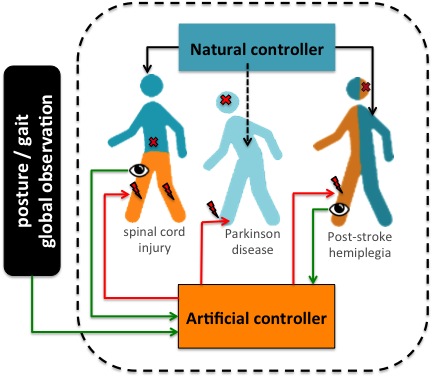Section: Research Program
Movement assistance and/or restoration
The challenges in movement restoration are: (i) improving nerve/muscle stimulation modalities and efficiency and (ii) global management of the function that is being restored in interaction with the rest of the body under voluntary control. For this, both local (muscle) and global (function) controls have to be considered.
Online modulation of ES parameters in the context of lower limb functional assistance requires the availability of information about the ongoing movement. Different levels of complexity can be considered, going from simple open-loop to complex control laws (figure 2).
|
Real-time adaptation of the stimulation patterns is an important challenge in most of the clinical applications we consider. The modulation of ES parameters to adapt to the occurrence of muscular fatigue or to environement changes needs for advanced adaptive controllers based on sensory information. A special care in minimizing the number of sensors and their impact on patient motion should be taken.



